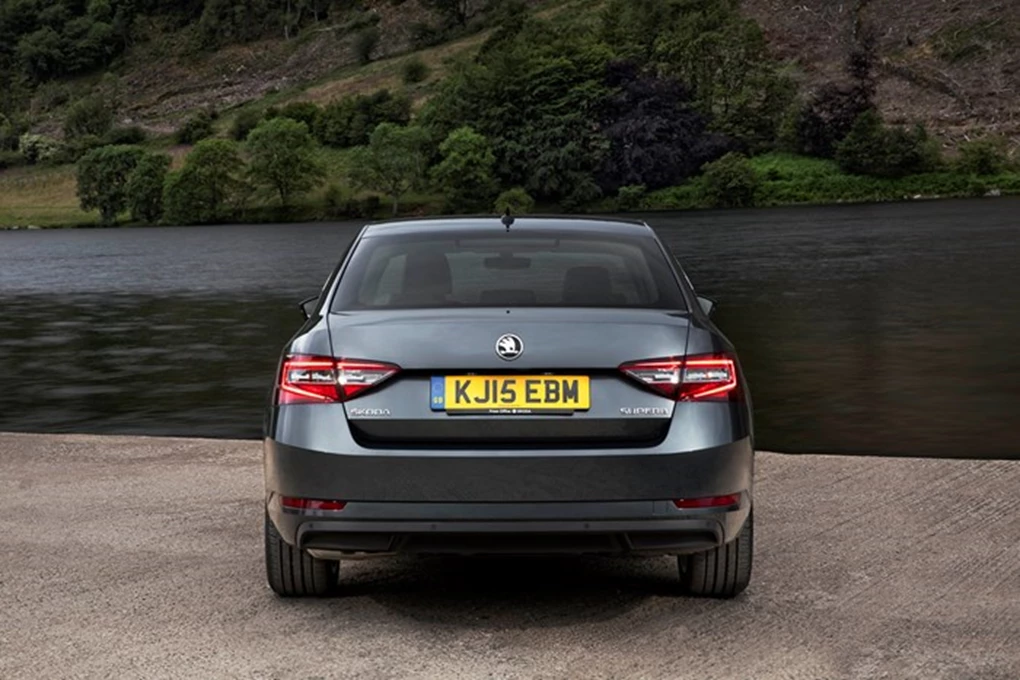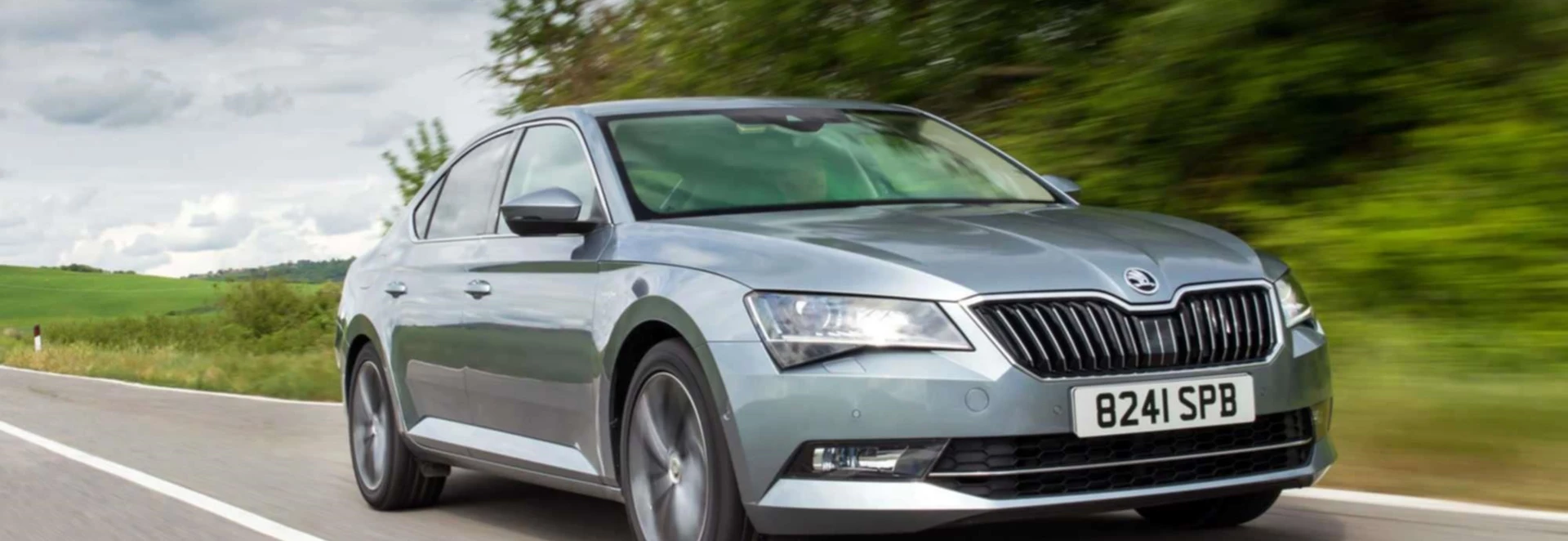Some may have considered the previous-generation Skoda Superb as a totally leftfield choice in its respective segment – with maturity lacking a little in certain areas. But the new third-generation Superb seems as though it has skipped a few generations and took it up a notch.
Despite being applauded by critics, the outgoing Superb remained a relatively niche choice, partly because of its quirky looks. Its exterior design is the first significant improvement as the latest Superb appears much more sharply defined and, as it takes inspiration from the Vision C concept car, quite futuristic. This in itself will give it a boost against rivals like the Ford Mondeo and Volkswagen Passat. It is also based on the Volkswagen Group’s MQB platform and is now 28mm longer and 47mm wider.
On top of its enhanced aesthetics, both inside and out, there are new technological features and more efficient engines. From launch, both hatchback and estate body styles will be available, as well as 4x4 variants – and it is quite likely that an Outdoor version will join the Superb line-up sometime in 2016.
But has the new Superb got enough gusto to topple the big-guns?
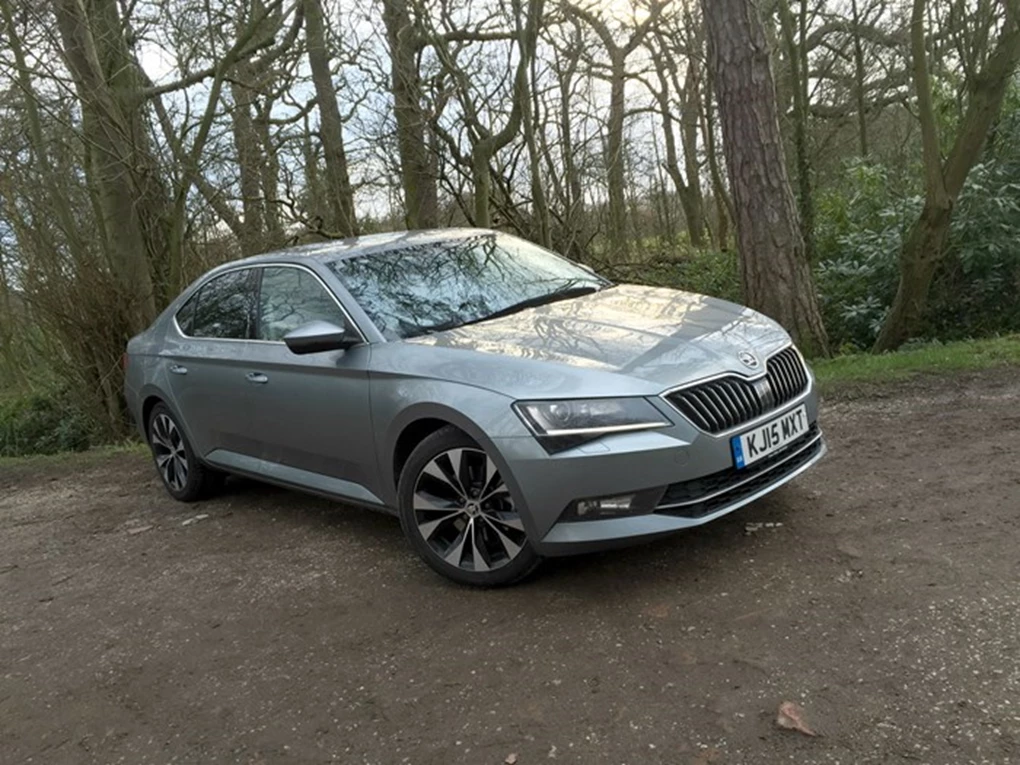
Performance
There is plenty to choose from on the engine front, ranging from the entry-level 118bhp 1.6-litre diesel to the potent 276bhp 2.0-litre TSI petrol – the latter completing the zero to 62mph sprint in just 5.8 seconds. There is also the choice of a six-speed manual transmission and the famed DSG automatic, the latter in six and seven-speed versions.
The most popular derivative, however, is expected to be the 148bhp 2.0-litre diesel mated to the six-speed manual, as it offers the best balance of power and efficiency. This engine is great at both low and high revs, giving you as much power as you will ever likely need. Above the 148bhp diesel is the 187bhp version of the 2.0-litre, but this only feels marginally more powerful – especially if you go for the heavier four-wheel drive version.
The sensible petrol choice is one of the 1.4-litre TSI units – with the 2.0-litre TSI engines reserved for more performance-orientated driving. Like the diesel, the 148bhp variant is expected to be the most popular in the 1.4-litre, delivering a similar balance of power and efficiency. It's smooth and quiet, traits which suit the Superb well, and although it needs a few more revs than the diesels to perform, it can offer fairly brisk performance.
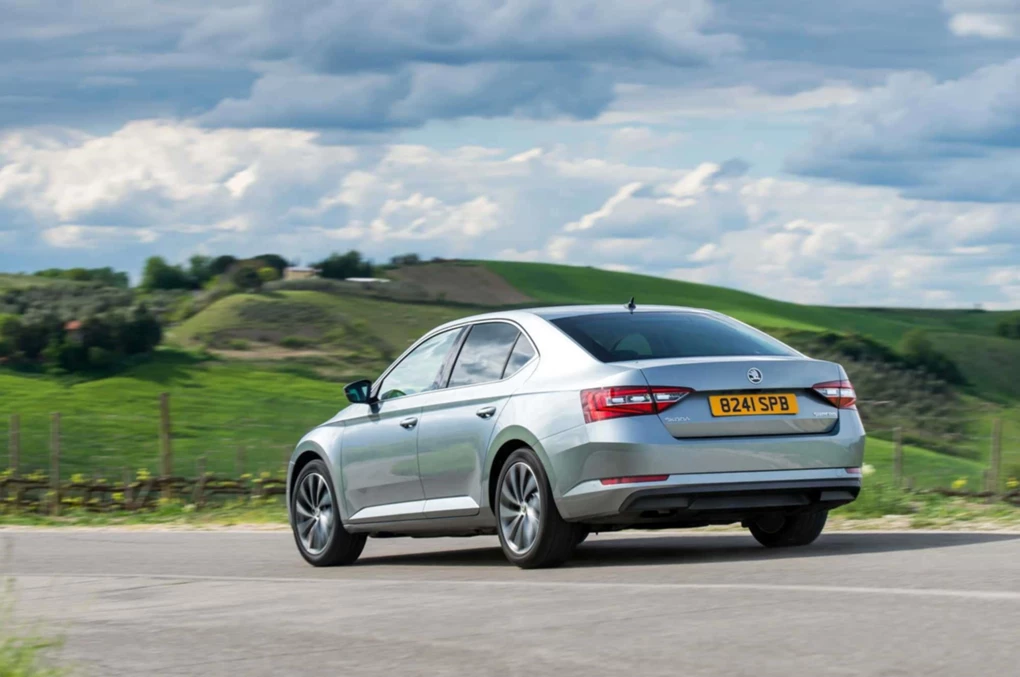
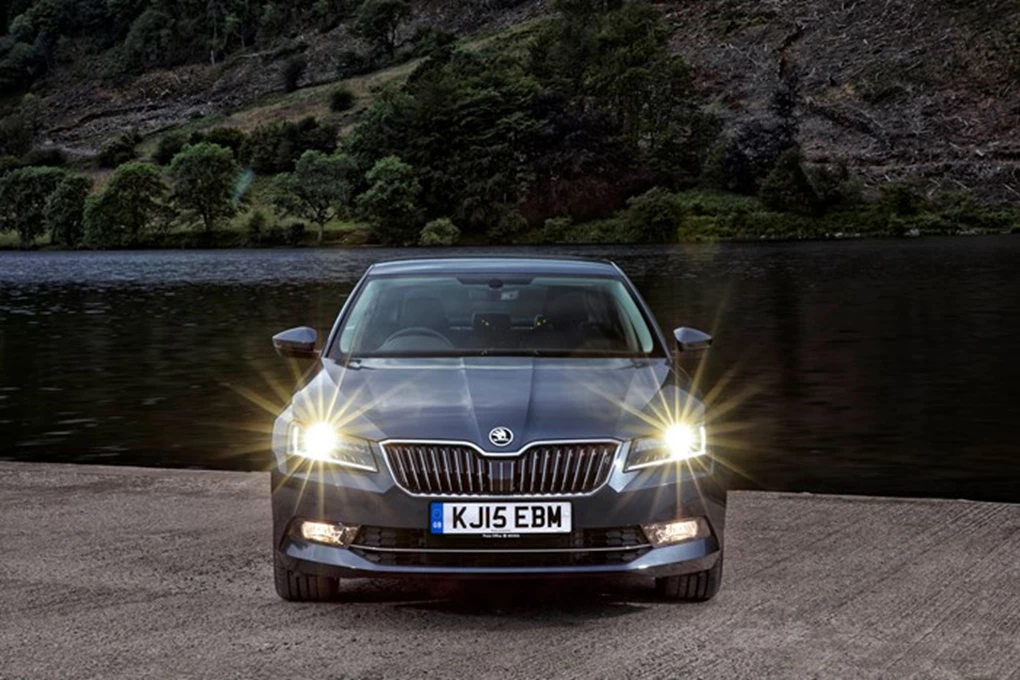
Thanks to its supple suspension, the Superb soaks up all kinds of road imperfections, even those dreaded sleeping policemen.
Ride and Handling
The Superb is not going to blow you away when it comes to excitement behind the wheel, but it will competently do the job most will give it. That job is to act as a comfortable cruiser on the motorway.
Thanks to its supple suspension, the Superb does this effortlessly, soaking up all kinds of road imperfections, even those dreaded sleeping policemen. There is, however, prominent road noise in the cabin when going over bumps at speed. From a motorway cruiser perspective, the Mondeo is better when it comes to cabin insulation.
If you throw the Superb into corners it is not going to offer the same levels of engagement as a BMW would, due to the slight lack of feedback. But if you are tackling winding country roads, then the Superb is more than capable of keeping your confidence levels high, with an abundance of grip and controlled body roll. It is certainly on-par with its Ford Mondeo and Volkswagen Passat competition.
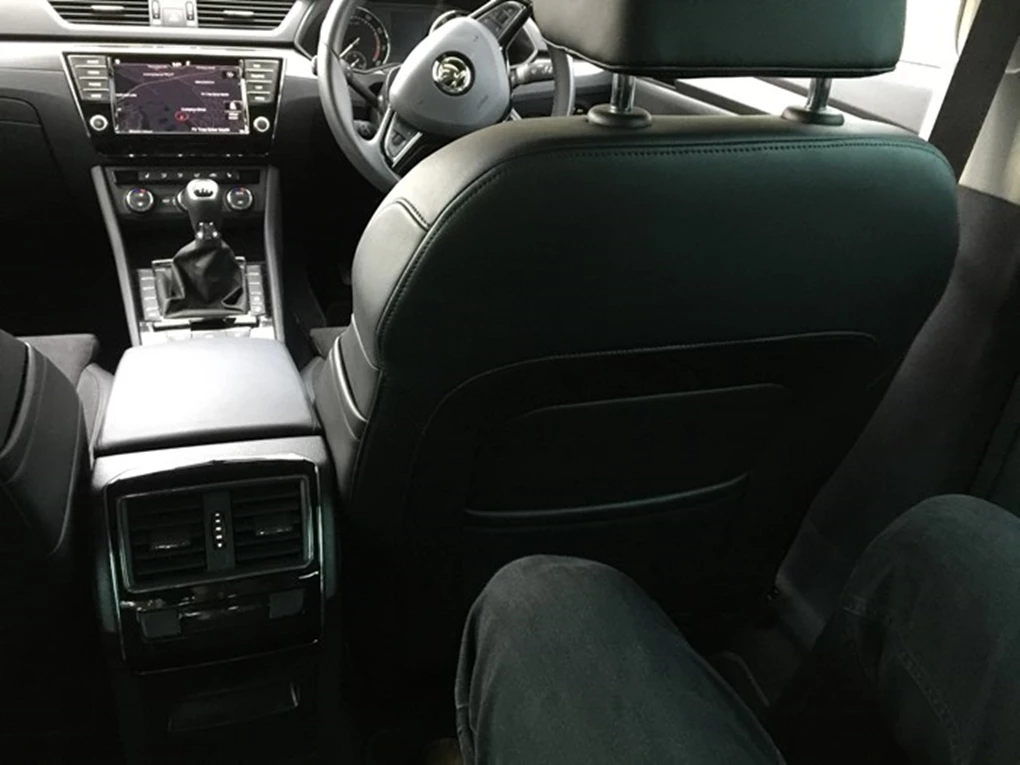
Did you know? The design of the Superb’s LED headlights are supposed to be reminiscent of eyelashes.
Interior and Equipment
It is hard to fault the cabin of the Superb. It is splashed with German refinement and features a plethora of Skoda’s convenient ‘Simply Clever’ features to boot. Ergonomically, everything is within easy reach, the technology is user-friendly and compatible with both Android and iPhone devices, and the seats are incredibly comfortable with plenty of adjustment.
Some handy ‘Simply Clever’ features include a new automatic boot opening, activated by waving your foot under the rear-bumper, a magnetic torch with 48 hours battery life (located in the boot), extra grip cup holders to allow you to open a bottle with one hand and Velcro luggage organisers for the boot.
There are five trims in total: S, SE, SE Business, SE L Executive and Laurin & Klement. Standard kit on every Superb includes Bluetooth, DAB digital radio, five-inch touchscreen with radio, 16-inch alloys and daytime running lights. The most popular trims are expected to be SE and SE Business. SE brings the likes of adaptive cruise control, dual zone air-conditioning, rear parking sensors and a 6.5-inch touchscreen – whereas SE Business offers sat-nav, front and rear parking sensors and leather upholstery.
A particularly impressive safety/convenience feature is the new radar-based Traffic Jam Assist system, which controls your speed when you are stuck in traffic, meaning all you have to do is steer.
Front and rear passenger space is brilliant, with more than enough leg and head room, easily venturing on luxury saloon territory. The only slightly negative thing is the large transmission tunnel – which is an obstruction regardless of engine selection. The boot offers the same clean-cut loading surface as the previous model, now with an additional 30 litres of storage space. This means a total of 625 litres with the seats up and 1,760 litres with the seats down.
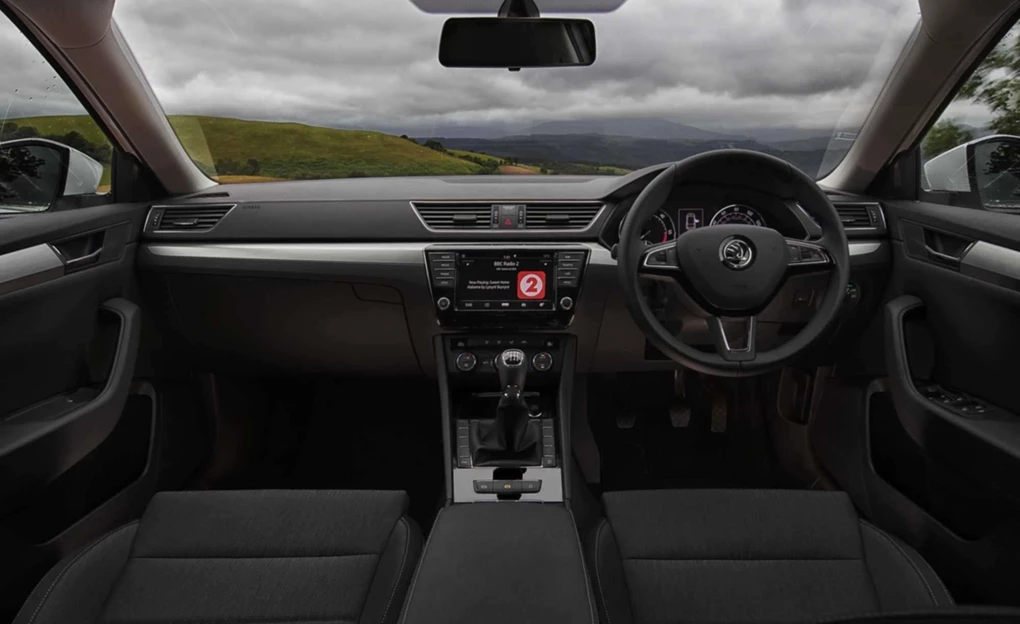
Cost
Its starting price reduction of £50 is not ground-breaking, but it does mean that the Superb starts from just £18,640 – less than the Ford Mondeo and Volkswagen Passat. Go for one of the most popular derivatives and you will be looking at upwards of £22,000.
The smallest diesel offering, the 118bhp 1.6-litre TDI mated to the DSG ‘box, is the most frugal, emitting just 105g/km of CO2 and returning a claimed average of 68.9mpg (expect low-to-mid 60s). The 148bhp 2.0-litre diesel emits as low as 108g/km and will return around the same as the 118bhp 1.6-litre TDI. Go for the 1.4-litre petrol with 148bhp and cylinder deactivation (where just two cylinders fire under light loads) help it achieve 57.6mpg and emit 116g/km of CO2.
The smallest diesel offering, the 118bhp 1.6-litre TDI mated to the DSG ‘box, is the most frugal, emitting just 105g/km of CO2 and returning a claimed average of 68.9mpg (expect low-to-mid 60s).
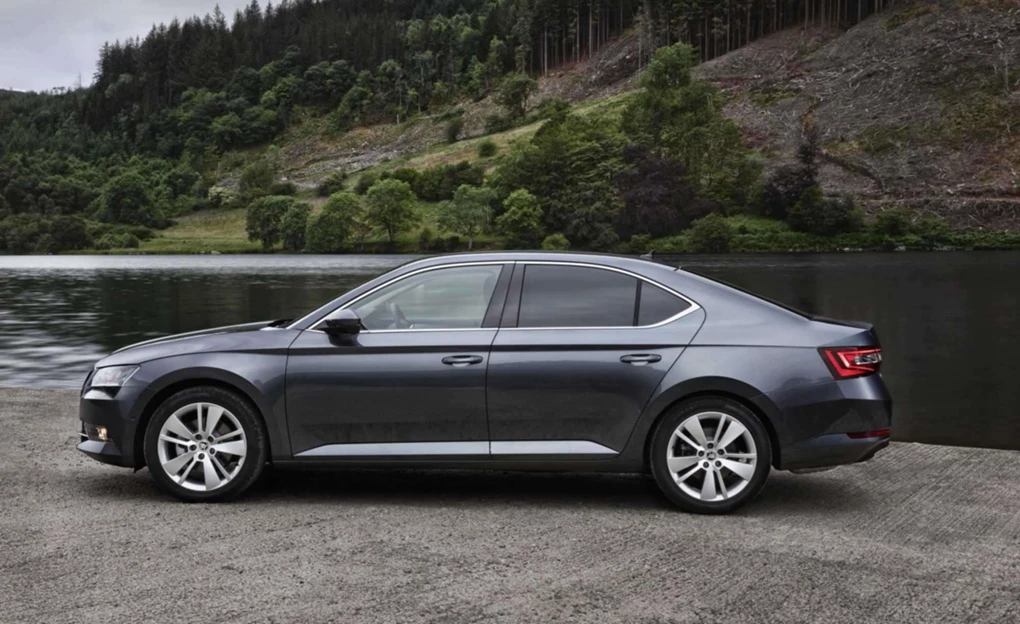
Our Verdict
The new Skoda Superb is a perfect example of how the Czech carmaker is moving forward, both from an engineering and design point of view. It stays true to what made the last model appealing and also improves on areas where it was falling behind a little.
If affordability is crucial, but you do not want to lose the prestige look and feel along the way, then the Superb is on the money.
